This article was co-authored by David Nazarian, MD. Dr. David Nazarian is a board certified Internal Medicine Physician and the Owner of My Concierge MD, a medical practice in Beverly Hills California, specializing in concierge medicine, executive health and integrative medicine. Dr. Nazarian specializes in comprehensive physical examinations, IV Vitamin therapies, hormone replacement therapy, weight loss, platelet rich plasma therapies. He has over 16 years of medical training and facilitation and is a Diplomate of the American Board of Internal Medicine. He completed his B.S. in Psychology and Biology from the University of California, Los Angeles, his M.D. from the Sackler School of Medicine, and a residency at Huntington Memorial Hospital, an affiliate of the University of Southern California.
There are 8 references cited in this article, which can be found at the bottom of the page.
wikiHow marks an article as reader-approved once it receives enough positive feedback. This article received 16 testimonials and 100% of readers who voted found it helpful, earning it our reader-approved status.
This article has been viewed 958,579 times.
A fever is the body's natural response to an underlying condition generally caused by a virus, infection, or another malady. A fever raises the body's internal temperature to create an inhospitable environment for the bug, which usually dies off within a matter of days. Generally, any temperature over 100.4 °F (38.0 °C) is considered a fever. This article will help self-identify a fever as well as give you advice about how to follow should the fever present a more serious medical situation.
Steps
Diagnosing Fever
-
1Take your temperature if you have a thermometer. If your temperature is 103°F (39.4°C) or lower, try to treat the fever at home, seeing whether it responds to at-home care.[1] If it's 104°F or higher, call emergency services or go straight to the emergency room; you may need immediate medical attention.
- If your temperature has been 103 °F (39 °C) for at least 3 days, call your doctor.
-
2Try to feel the skin of the person in question. If the person's skin feels very hot to the touch, they are likely running a fever. Using this method, though, it's going to be hard to tell whether your temperature is at 98.7 °F (37.1 °C) or at 101.2 °F (38.4 °C). If the person feels hot to the touch, look for other symptoms or pick up a thermometer from a drug store to see if medical intervention may be necessary.Advertisement
-
3Check for signs of dehydration. A fever happens when your body raises its internal temperature in order to ward off harmful infections, viruses, or other maladies.[2] Some research has even found that certain immune cells work better at these elevated temperatures. It's a natural defense mechanism. One significant result of this switching on of the body's heat switch is that patients can get or feel dehydrated.
- Signs[3]
that you may be dehydrated include:
- Dry mouth
- Thirst
- Headache and fatigue
- Dry skin
- Constipation
- Dehydration can be made even worse if it is accompanied by vomiting or diarrhea.[4] If you've experienced any one of these, especially, be sure to drink plenty of fluids to compensate for their loss. If you're struggling to drink fluids, try eating ice chips.
- Signs[3]
that you may be dehydrated include:
-
4Check for muscle aches. In many cases, muscle aches are associated with dehydration, but they can be especially aggravating in a patient with the fever. Note: If your fever presents with back or muscle stiffness, call a doctor right away, as your condition may be related to a number of complications including kidney issues or bacterial meningitis, which can potentially cause brain damage.
-
5Look for especially bad signs of a fever. If your fever is at or above 104°F (40°C), you could experience some of the following in addition to hot flashes, dehydration, headaches, muscle aches, and general weakness. If you do experience any of the following, or have cause to believe that your fever is above 104°F, see a doctor immediately[5] :
- Hallucination
- Confusion or irritability
- Convulsions or seizures
-
6When in doubt, see a doctor. If you are dealing with a child who potentially has a fever, and whose temperature clocks in at higher than 103°F (39.4°C), see a doctor. In most cases, treating mild or moderate fevers at home is completely acceptable; in few cases, the underlying reason for the fever may demand serious medical attention.
- If you have a high fever or if your symptoms impact your ability to function, call a friend or family member and ask them to escort you to the doctor's office. It's not worth the risk of trying to get yourself there when you're in a compromised state.
Getting Basic Treatment for Fever
-
1Understand that for low-grade (mild) fevers, some doctors recommend letting the fever run its course. A fever is a body's natural response to a foreign body. Breaking the fever before the body has had time to attack the foreign body may prolong the illness or mask other symptoms associated with the fever.[6]
-
2Take an OTC pain medication. An over-the-counter pain medication, like an NSAID or acetaminophen, can help reduce a fever.[7] Often, low doses of NSAIDs produce good results.
- Aspirin is for adults only. Aspirin given to children has been linked to a dangerous condition called Reye's Syndrome.[8] It is therefore advisable only to administer aspirin as an adult.
- Acetaminophen (Tylenol) or ibuprofen (Advil) are acceptable substitutes for all ages. If your temperature remains high even after the recommended dose, don't take more; instead, consult a doctor.
-
3Drink plenty of fluids. Drinking enough fluids can help decrease your fever.[9] Fluids are essential for fevers because they reduce the risk of dehydration, a serious concern during fevers. Stick mostly to water if experiencing a fever. Sodas and teas, in moderation, may help calm the stomach. Try to eat lukewarm soups and other liquid broths in addition to more solid foods. Popsicles may also help, and provide a cooling sensation in the process.
- Dehydration may exacerbate a fever if left untreated.
Expert Q&A
-
QuestionHow can I treat a fever?
 David Nazarian, MDDr. David Nazarian is a board certified Internal Medicine Physician and the Owner of My Concierge MD, a medical practice in Beverly Hills California, specializing in concierge medicine, executive health and integrative medicine. Dr. Nazarian specializes in comprehensive physical examinations, IV Vitamin therapies, hormone replacement therapy, weight loss, platelet rich plasma therapies. He has over 16 years of medical training and facilitation and is a Diplomate of the American Board of Internal Medicine. He completed his B.S. in Psychology and Biology from the University of California, Los Angeles, his M.D. from the Sackler School of Medicine, and a residency at Huntington Memorial Hospital, an affiliate of the University of Southern California.
David Nazarian, MDDr. David Nazarian is a board certified Internal Medicine Physician and the Owner of My Concierge MD, a medical practice in Beverly Hills California, specializing in concierge medicine, executive health and integrative medicine. Dr. Nazarian specializes in comprehensive physical examinations, IV Vitamin therapies, hormone replacement therapy, weight loss, platelet rich plasma therapies. He has over 16 years of medical training and facilitation and is a Diplomate of the American Board of Internal Medicine. He completed his B.S. in Psychology and Biology from the University of California, Los Angeles, his M.D. from the Sackler School of Medicine, and a residency at Huntington Memorial Hospital, an affiliate of the University of Southern California.
Diplomate, American Board of Internal Medicine You can take an over-the-counter medication like Advil, Aleve, or Tylenol to decrease your fever and help with your symptoms. Remember to drink plenty of fluids as well. You can also take a cold bath or shower to lower your fever.
You can take an over-the-counter medication like Advil, Aleve, or Tylenol to decrease your fever and help with your symptoms. Remember to drink plenty of fluids as well. You can also take a cold bath or shower to lower your fever. -
QuestionI have a humongous headache, my legs are sore, I feel like I haven't drunk water in weeks. I don't have a thermometer and my dad he is Hispanic, so he believes it will just go away. I didn't know what to do. Does this mean I have a fever? I also get chill, I always want to be in my blankets.
 Marsha Durkin, RNMarsha Durkin is a Registered Nurse and Laboratory Information Specialist for Mercy Hospital and Medical Center in Illinois. She received her Associates Degree in Nursing from Olney Central College in 1987.
Marsha Durkin, RNMarsha Durkin is a Registered Nurse and Laboratory Information Specialist for Mercy Hospital and Medical Center in Illinois. She received her Associates Degree in Nursing from Olney Central College in 1987.
Registered Nurse Please see your doctor asap as it sounds like you are feeling pretty ill and might need medical care.
Please see your doctor asap as it sounds like you are feeling pretty ill and might need medical care. -
QuestionIs it normal to have a stomach ache when you have a fever?
 Marsha Durkin, RNMarsha Durkin is a Registered Nurse and Laboratory Information Specialist for Mercy Hospital and Medical Center in Illinois. She received her Associates Degree in Nursing from Olney Central College in 1987.
Marsha Durkin, RNMarsha Durkin is a Registered Nurse and Laboratory Information Specialist for Mercy Hospital and Medical Center in Illinois. She received her Associates Degree in Nursing from Olney Central College in 1987.
Registered Nurse Yes, you can have a stomach ache with a fever.
Yes, you can have a stomach ache with a fever.
Warnings
- If you have a fever for more than 48 hours (in general), without it going down, go to your doctor.⧼thumbs_response⧽
- If you feel dizzy and can't really stand up, wait till you feel better before you walk around.⧼thumbs_response⧽
- If the fever is at or above 104 °F (40 °C) for an adult, 103 °F (39 °C) for a child, or 100.4 °F (38.0 °C) for an infant, seek urgent medical care.⧼thumbs_response⧽
References
- ↑ http://firstaid.webmd.com/fever-in-adults-treatment
- ↑ http://firstaid.webmd.com/fevers-causes-symptoms-treatments
- ↑ http://www.mayoclinic.com/health/dehydration/DS00561/DSECTION=symptoms
- ↑ http://www.mayoclinic.com/health/dehydration/DS00561/DSECTION=causes
- ↑ http://www.mayoclinic.com/health/fever/DS00077/DSECTION=symptoms
- ↑ http://www.mayoclinic.com/health/fever/DS00077/DSECTION=treatments-and-drugs
- ↑ David Nazarian, MD. Diplomate, American Board of Internal Medicine. Expert Interview. 26 March 2020.
- ↑ http://www.nlm.nih.gov/medlineplus/ency/article/001565.htm
- ↑ David Nazarian, MD. Diplomate, American Board of Internal Medicine. Expert Interview. 26 March 2020.
- ↑ David Nazarian, MD. Diplomate, American Board of Internal Medicine. Expert Interview. 26 March 2020.
About This Article
The best way to tell if you have a fever is to use a thermometer to see if your body temperature is above 100.4 °F. If you don't have a thermometer on hand, ask someone to feel your skin to see if it's particularly hot to the touch. Also, muscle aches, dry mouth, and fatigue are common signs that a fever is present. Be sure to rest and get plenty of fluids to bring your fever down. If the fever is 104°F or higher, call emergency services or go straight to the emergency room for medical attention. For more tips on breaking a fever, read on!
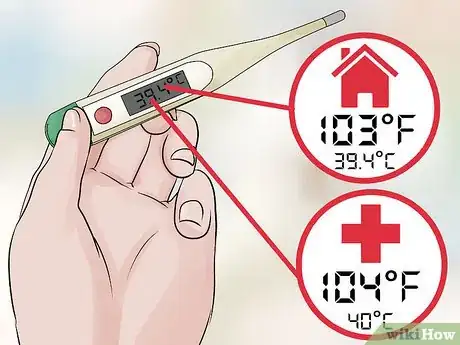
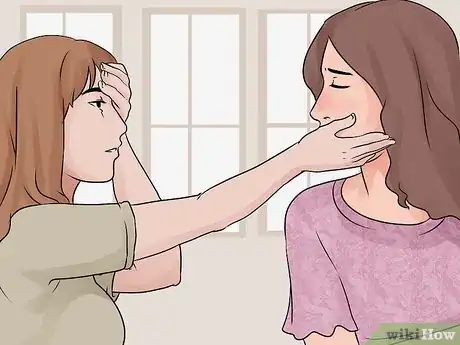
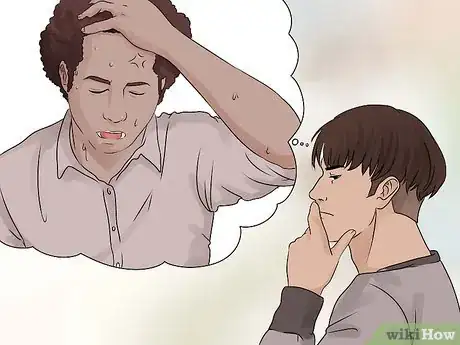
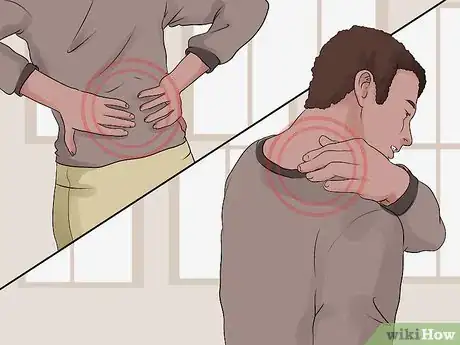

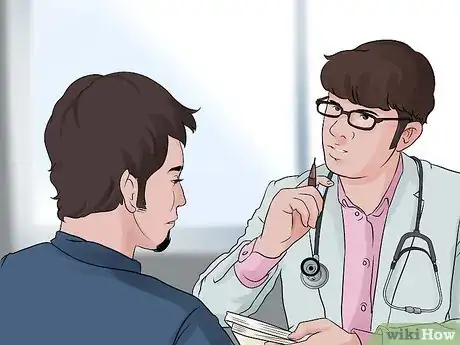

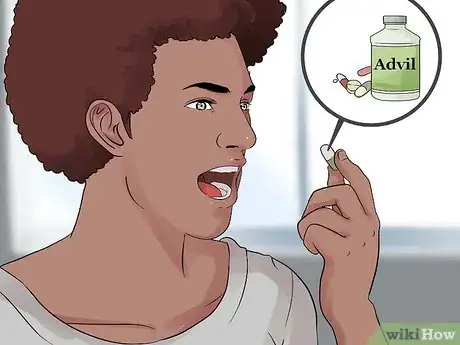






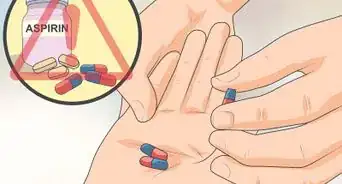
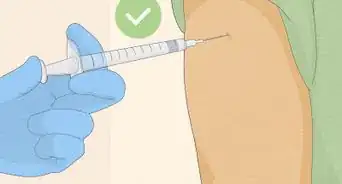
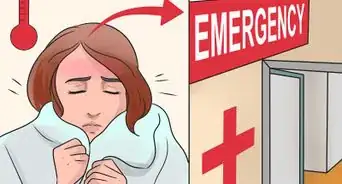























































Medical Disclaimer
The content of this article is not intended to be a substitute for professional medical advice, examination, diagnosis, or treatment. You should always contact your doctor or other qualified healthcare professional before starting, changing, or stopping any kind of health treatment.
Read More...